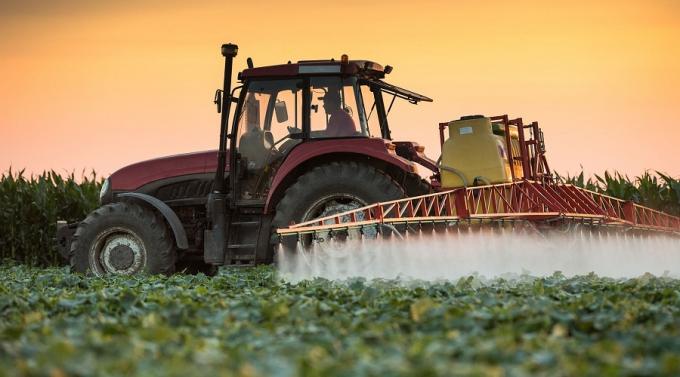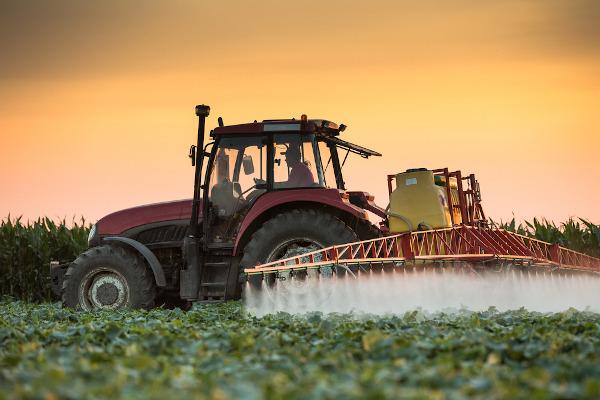THE green revolution was one of the profound transformations the world went through after the Second World War. This innovation was known for will improve Agricultural production and increase food production from the 1960s and 1970s.
However, this revolution did not only bring improvements in the field of agriculture and livestock. Some negative consequences emerged, such as the technological dependence of underdeveloped and/or developing countries on developed countries.
Read too: What were the effects of the modernization of the field?
What is Green Revolution?
The Green Revolution was a set of technological innovations that permeated the primary sector of the economy (agriculture and livestock) in order to improve such activities. These innovations were characterized by containing a cadvanced technical knowledge, with scientists committed to strengthening agricultural production around the world.
Among these innovations, we can mention the development of
pesticides
fungicides
herbicides
chemical fertilizers
seeds more adaptable to extreme climates
In addition, there was also the creation of Genetically Modified Organisms (GMOs).
Characteristics of the Green Revolution
As characteristics of the Green Revolution, we can mention the high level of technology, research and study in the areas of the primary sector and, later, of the secondary sector of the economy, with the improvement of heavy machinery for rural work.
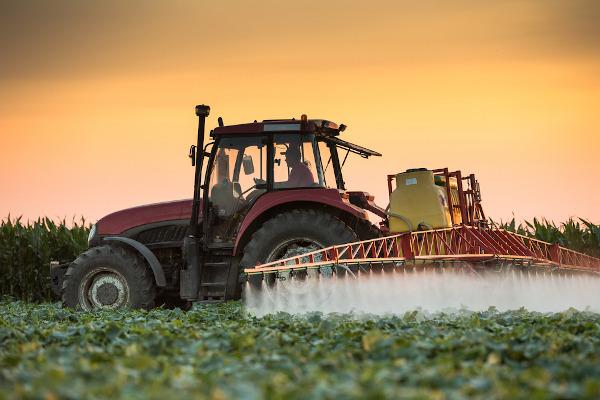
These surveys brought great advances in agricultural production, in all types of foods, with chemical fertilizers and pesticides, allowing farmers (from small to large landowner) greater pest control and increase in more profitable crops, making properties more productive.
Origin of the Green Revolution
Most of the innovations promoted by the Green Revolution emerged from the 1940s onwards, but the revolution gained its heyday in the 1970s, with the expansion of agricultural frontiers in the countries of the Southern Hemisphere, as in the Brazil.
The term Green Revolution was coined by William Gown, in 1966, in the city of Washington, U.S, during a conference in the US capital. Yet, innovations started with Norman Borlaug, in the 1930s. Borlaug was an American agronomist and researched the variety of wheat seeds that were resistant to pests and diseases. His studies were applied, first and on a large scale, in the Mexico, which saw its wheat production jump seven times in the 1940s.
In 1970, Borlaug's studies earned him the Nobel Prize of Peace, for the feat of increase food production, which could eradicate hunger in the following decades.
See too: Crop rotation - practice in which there is planned alternation of different cultures
Positive and negative points of the Green Revolution
The Green Revolution came about with the intent to increase-if food production and eradicateif world hunger through new agricultural techniques, job creation in areas of climate extreme, in addition to new ways to correct the acidity of the soil and the use of agricultural machinery and equipment.
In practical terms and in terms of the increase in production x planted area, the Green Revolution was a success, as it achieved its initial objective of increasing agricultural production. plantations in semi-arid or cold climates.
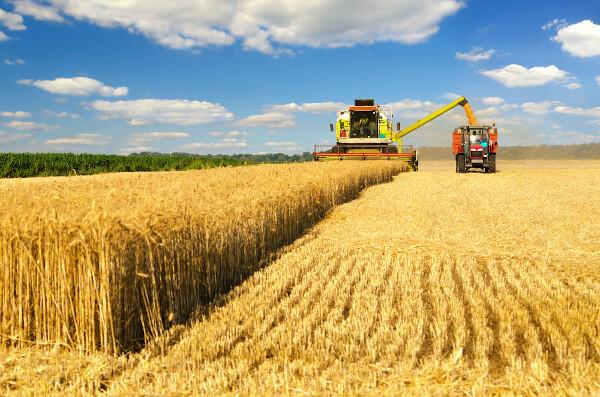
Seeds have become more resistant to pests, in addition to vitamins and other nutrients that have been added Thethe GMOs. Smaller areas started to produce more food, as many seeds were modified to reduce their reproduction time. An extraordinary advance.
In the field of livestock, innovations have allowed animals grow faster and have a lower percentage of fat in derivatives (milk, meat, eggs), which may be resistant to certain diseases. The variety of commercial plants, such as corn, soybeans and rice, was also a benefit of the Green Revolution, raising the Gross Domestic Product (GDP) of agrarian countries and exporters of commodities.
However, all this food success turned agriculture into a big capitalist enterprise, intensifying the land concentration in the developing countries. In addition, the exaggerated use of pesticides and fertilizers, according to some studies, can cause cancer, allergies and other similar diseases in those who consume foods that are watered with these chemicals.
As the Green Revolution brought great technological incentives, underdeveloped and developing countries became dependent on the companies that produce these improvements. Most of these companies are from transnationals of developed countries, favoring the historical logic of dependency noorth x sul criticized in recent decades.
Green Revolution in Brazil
In Brazil, the Green Revolution brought a series of benefits to large rural producers, such as expansion of agricultural frontier in the regions North and Center-OThis oneof the country in the 1970s.
Much of this expansion had significant contribution of the ggeneral federal, which created bodies responsible for adopting the technological improvements arising from the revolution. Among one of these bodies, we can mention the Brazilian Agricultural Research Corporation (embrapa), founded in 1973. The improvements were so significant that the period known as the “economic miracle” at that time had agriculture as one of its pillars.
Based on this, Brazil becameif one of the great world leaders in the production and export of food, especially soy and corn, grains mostly destined for the domestic market of countries in the Northern Hemisphere.
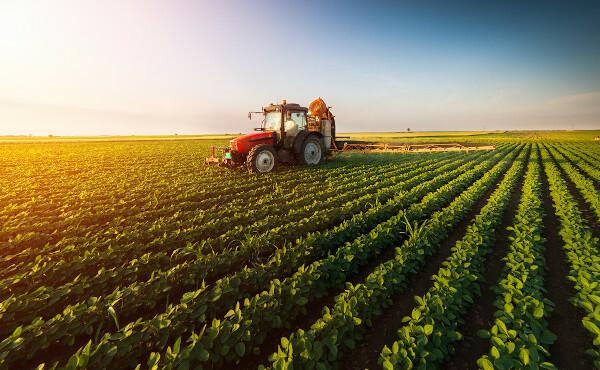
At the moment, Brazil still maintains the status of export leadership in some agricultural products, such as sugarcane, oranges and corn, and is the second largest exporter of soybeans, behind the United States. This leadership is due to the innovations of the Green Revolution, which transformed Brazilian agriculture into something very mechanized and competitive on the world stage.
However, this competition has costs, often paid by the environment and the needy population, which ends up moving from rural areas to cities in search of jobs because they cannot find something in the large rural properties, increasing the exodus rural and urban swelling.
To corroborate this scenario, we can observe the composition of the Brazilian population in terms of occupied spaces. In the 1960s, the rural population was 55% and the urban population 45%. In the following decade, the numbers reversed, making Brazil an urban country, with 55% of the population living in cities, a percentage that only increased in the last decades of the 20th century and in the first decades of this century.
Consequences of the Green Revolution
With the changes promoted by the Green Revolution, thanks to technology and scientific research, in the last decades of the 20th century, the considerable increase in the number of foods, and some countries became protagonists in this economic field, with Brazil and Mexico (the latter being the pioneer in agricultural innovations in the 1940s).
However, these innovations are expensive and related to dangerous chemical elements nature, soil, food and human beings who consume these foods. In the planted areas, there was the removal of natural vegetation to expand agricultural production, which accentuates environmental problems, like:
erosive processes;
siltation of rivers;
contamination of ground by the excessive use of pesticides;
loss of biodiversity natural, among other negative processes towards nature.
There is also the social issue, such as the accentuation of the urban exodus by the poorest population and the indebtedness of rural producers for the purchase of chemical inputs, generating concentration of income and land.
The initial idea of the Green Revolution was to eradicate hunger from the planet in the decades after its implementation, but this did not happen, as we know. On the contrary, more and more people are hungry around the world. THE revolution benefited large companies holders of chemical patents for GMOs and pesticides, responsible for the production and distribution of these materials. These companies have increased their wealth and are fundamental in the world agricultural chain, which does not mean anything positive.
Also access: Evolution of agriculture and its techniques
solved exercises
Question 1 - (UEA 2017) Agroecology adopts sustainable principles in production relations in the countryside, constituting an alternative to the agricultural model defined by
A) informal economy.
B) green revolution.
C) crop rotation.
D) financial speculation.
E) development theory.
Resolution
Alternative B. Agroecology adopts principles that do not harm the environment or interfere with the natural rhythm of plants, without pesticides and/or genetically modified organisms.
Question 2 - (Unimontes 2015) From the 1950s onwards, an agricultural development model exported to countries underdeveloped was known as the Green Revolution, which caused profound transformations in the agrarian space. of these countries. Considering the effects of the Green Revolution, it is possible to infer, EXCEPT:
A) The use of pesticides and agricultural machinery not adapted to the types of soil in which they were used caused a series of environmental impacts on the ecosystems of countries that sought to invest in the Revolution Green.
B) The granting of bank financing subsidized by the governments of underdeveloped countries has become a emergency measure due to the high costs of the packages that the producers assumed with the adhesion of the Revolution Green.
C) In the organization of space, monocultures advanced over environmentally preserved regions, creating areas agricultural frontier in forest and savanna areas, etc., which gave way to pastures and plantations.
D) The increase in cereal production in countries that joined the Green Revolution since the 1960s achieved achieve the basic goal of the Green Revolution, which was to ensure sufficient food production to combat the hunger.
Resolution
Alternative D. Today, food production has increased considerably, but it is still not able to fight hunger due to logistics, infrastructure, capitalist interests, among other obstacles.
By Attila Matthias
Geography teacher
Source: Brazil School - https://brasilescola.uol.com.br/geografia/revolucao-verde.htm

